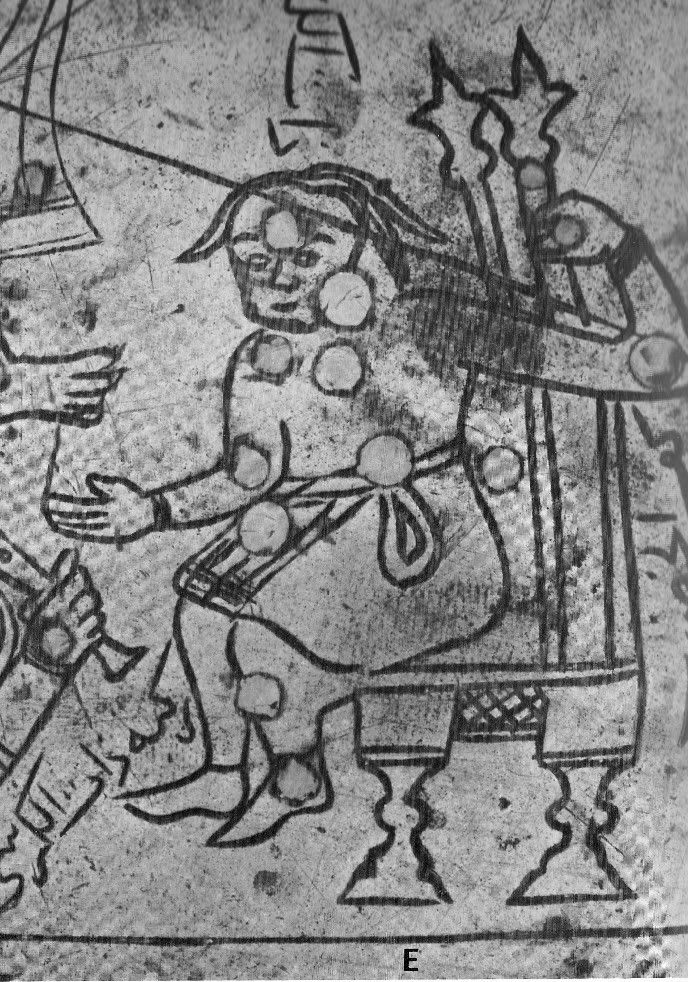DianeOD

Known to Latin world as Cassiopeia. Arabic title usually rendered as "The Lady with a Chair" actually the term 'chair' is kursiyy which means the chair on which the legal expert sits and decides cases.
There was a woman jurist recorded in early Islam.
The 'coins in her lap' are nicely put into a bag, and the star 'shield' which exactly marks her lap translated into an heraldic shield quite early in western imagery on card. Interesting that the pronounced, high curve of her arm is sometimes kept tho'.
Properly she should probably be Empress, as counterpart for the Emperor, Cepheus. In western packs it seems clear that the relative closeness to North - i.e. superiority/closeness to heaven- had political overtones, so packs are clearly categorised into those which have the Bootes-Cassiopeia as Pope-and High priestess, with Cepheus-Andromeda as Emperor-Empress (pro papal) and those which use the reverse identifications (pro-Emperor).
In the cheap, mass-produced packs, too, and probably for reasons of reference to classical myth which speak of Juno as being a chained 'Queen of Heaven' this character as Empress or as High priestess is again - in particular lines of pack - supposed Andromeda, whose description is "the woman in chains".
In general, the western iconography on cards gets confused pretty early, on this issue of the woman on the kursiyy, and its title referring to the 'chair of judgement' leads to the inclusion of both an empress and a 'Justice' (as Libra), putting into the non-zodiacal series of Atouts, a figure from the 12-series of the monthly constellations. This has occurred by the time that our current rescension of the Charles VI cards was formed.
Don't know if this will be helpful for present topics under discussion - maybe.

